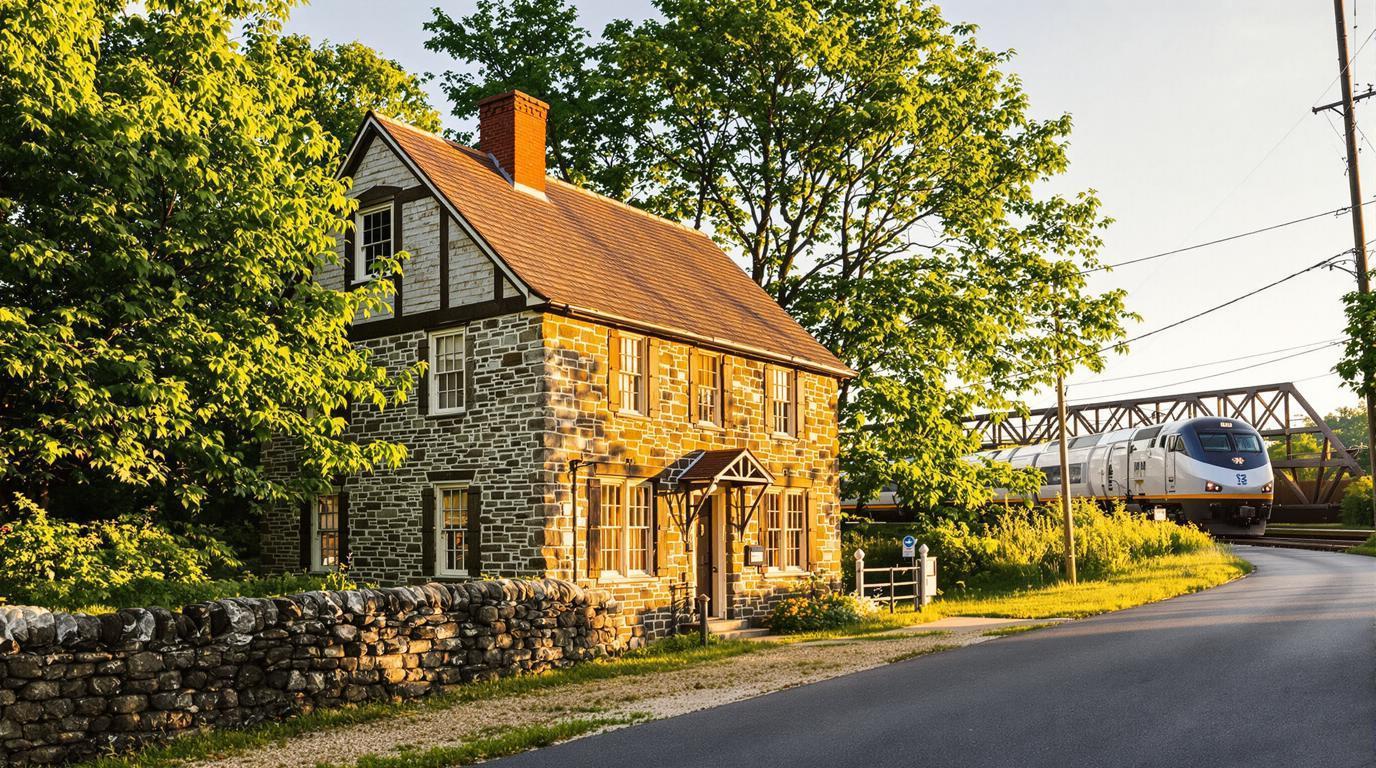The morning mist clings to the Hudson River as your Amtrak train pulls into Rhinecliff Station, just 90 minutes from Manhattan’s chaos. Most passengers rush past this unassuming stop, unaware they’re bypassing one of the Hudson Valley’s most authentic Dutch colonial sanctuaries. While crowds flock to overcrowded destinations like Cold Spring and Beacon, Rhinebeck’s 7,380 residents quietly preserve centuries-old secrets that even seasoned travelers overlook.
I discovered this hidden gem during a photography assignment three summers ago, when a local historian whispered about buildings that predate the American Revolution. What I found was a living museum where authentic Dutch colonial architecture remains untouched by mass tourism, where residents still gather at the same tavern where Revolutionary War spies once plotted.
The urgency is real. October’s foliage season transforms the Hudson Valley into a tourist magnet, but savvy travelers arrive in July to experience Rhinebeck’s authentic character before the autumn crowds discover what locals have protected for generations.
The Dutch Colonial Architecture That Defies Time
Hidden Stone Houses From the 1600s
Walking through Rhinebeck’s historic district feels like stepping into a forgotten century. The village’s elevation of 200 feet above sea level provides stunning views of Dutch colonial fieldstone houses that most tourists never notice. These structures, built with local Hudson Valley stone and timber, showcase craftsmanship techniques that disappeared centuries ago. Local preservation experts estimate that over 40 buildings predate 1800, yet only insiders know which ones house the most remarkable architectural details.
The Beekman Arms Secret
While tourists photograph the famous Beekman Arms Inn, locals point me toward the building’s hidden Dutch architectural elements. Built in 1766, this National Historic Landmark conceals original Dutch framing techniques in its basement and upper floors. The inn’s current owners recently discovered 18th-century Dutch colonial wall paintings behind modern renovations, details that even guidebooks miss.
Authentic Experiences That Tourists Overlook
The Railroad Heritage Trail
The Dutchess County Rail Trail stretches 13 miles through landscapes that inspired Hudson River School painters. Unlike crowded hiking destinations, this converted railroad bed offers solitude and authentic Hudson Valley scenery. Local cyclists shared their favorite hidden viewpoints where the trail crosses original Dutch colonial farm boundaries, marked by centuries-old stone walls.
Farmer’s Markets and Local Traditions
Rhinebeck’s Saturday farmer’s market, operating since 1974, showcases Hudson Valley authenticity that chain stores can’t replicate. Local vendors sell produce from farms established by Dutch settlers, maintaining agricultural traditions that connect directly to the region’s colonial heritage. The market’s location in the historic district creates an authentic atmosphere that smaller New York historic towns struggle to match.
The Exclusive Experience Locals Protect
Secret Historical Walking Routes
Residents reluctantly shared their favorite unmarked historical walking route through the village’s back streets. This path connects five Dutch colonial houses, two original churches, and a hidden cemetery where Revolutionary War soldiers rest. The route avoids tourist areas while revealing architectural details that professional historians study. Local guide Sarah Mitchell told me, “We don’t advertise this walk because it maintains the village’s authentic character.”
Private Estate Access
Several historic estates offer private tours by appointment only, providing access to Dutch colonial interiors that public tours never reveal. These experiences, limited to small groups, showcase original furnishings and architectural elements that survived centuries of change. Similar authentic experiences exist in other preserved New England communities, but Rhinebeck’s Dutch heritage offers unique cultural insights.
Insider Access and Seasonal Secrets
July’s Hidden Advantages
Summer visitors enjoy Rhinebeck’s authentic character without autumn’s overwhelming crowds. July’s warm weather reveals the village’s outdoor spaces at their best, while locals are more willing to share insider information before peak season arrives. The Hudson Valley’s humid continental climate creates perfect conditions for exploring historic districts and hidden trails.
Transportation Insider Tips
Amtrak’s Rhinecliff Station, just two miles from the village center, provides the most authentic arrival experience. Local taxi drivers know shortcuts through scenic back roads that reveal colonial heritage similar to other preserved American towns. The station’s vintage architecture complements Rhinebeck’s historic character, creating a seamless travel experience that modern transportation rarely provides.
Travel Note: Local historian James Patterson explained that Rhinebeck’s preservation success stems from residents’ commitment to maintaining authentic character over tourist revenue. “We could easily commercialize our Dutch heritage,” he said, “but protecting authenticity serves our community better than attracting crowds.”
The Hudson Valley’s most authentic Dutch colonial sanctuary awaits discovery, but only for travelers who value genuine heritage over tourist attractions. Rhinebeck’s 7,380 residents continue protecting centuries-old secrets that mass tourism threatens to overwhelm. Your 90-minute train ride from Manhattan opens doors to experiences that guidebooks rarely mention, where authentic American colonial history lives in daily community life rather than museum displays.
Essential Questions About Rhinebeck
When is the best time to visit before crowds arrive?
July through early September offers ideal weather and authentic local experiences before October’s foliage crowds transform the Hudson Valley. Residents are more welcoming during quieter months, sharing insider knowledge that peak season visitors never receive.
How do I access the hidden Dutch colonial buildings?
Contact the Rhinebeck Historical Society for private tour arrangements, or join Saturday walking tours that local volunteers lead through unmarked historic districts. Many significant buildings require advance permission for interior access.
What makes Rhinebeck different from other Hudson Valley towns?
Rhinebeck’s 39.8 square miles contain the region’s most concentrated collection of preserved Dutch colonial architecture, while maintaining active community traditions that connect directly to 17th-century settlement patterns. The village balances historical preservation with authentic daily life better than more commercialized destinations.
Are there accommodations that reflect the area’s Dutch heritage?
The historic Beekman Arms Inn provides authentic colonial atmosphere with modern amenities, while local bed-and-breakfasts occupy converted Dutch colonial houses. Booking early ensures access to accommodations that enhance rather than compromise the historical experience.
How can I support local preservation efforts?
Shop at local businesses, attend community events, and respect historic properties by following local guidelines. The Rhinebeck Historical Society welcomes donations that support ongoing preservation projects protecting the area’s Dutch colonial heritage for future generations.
